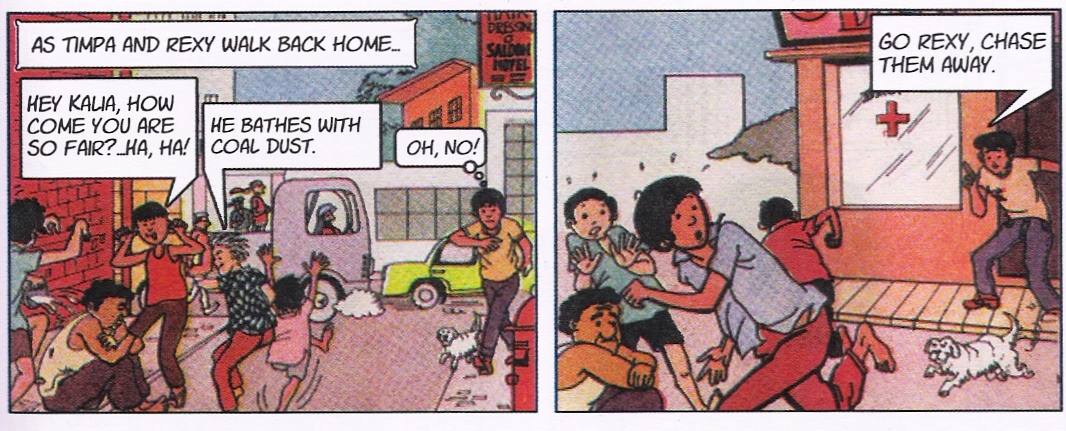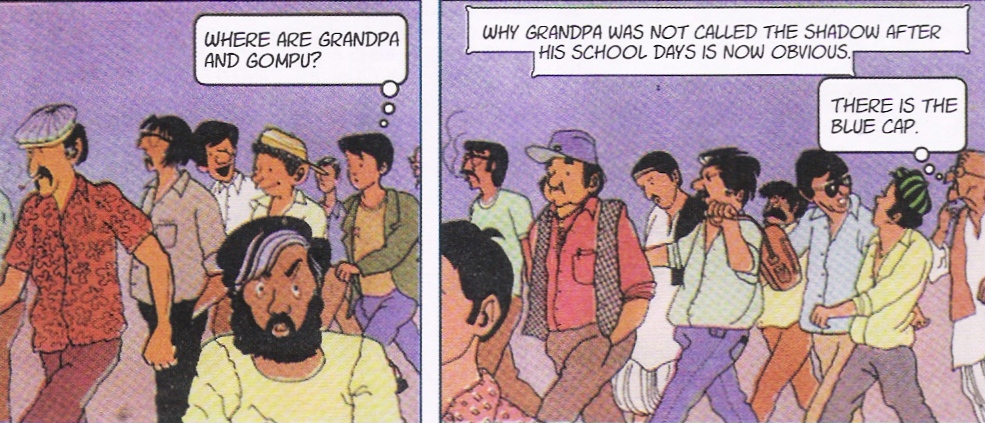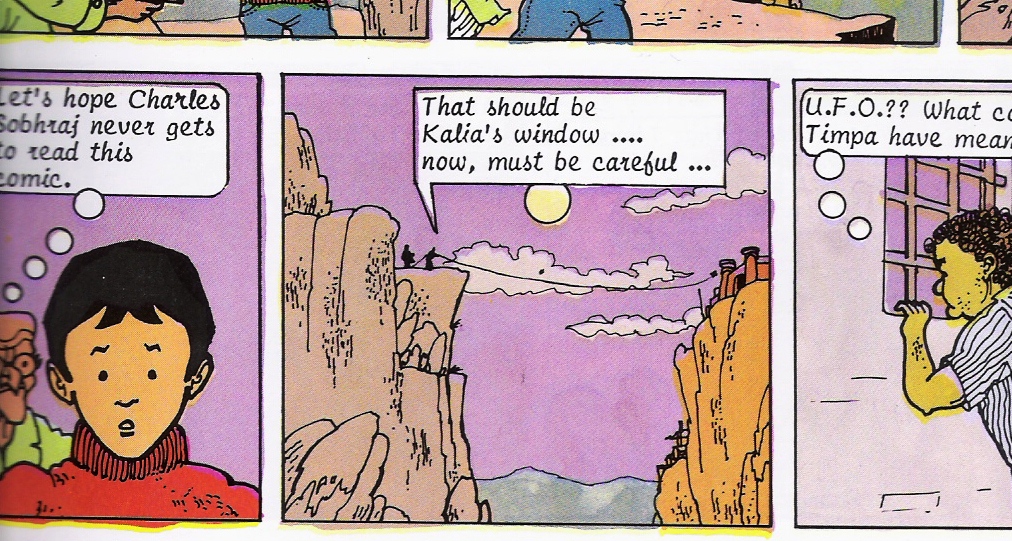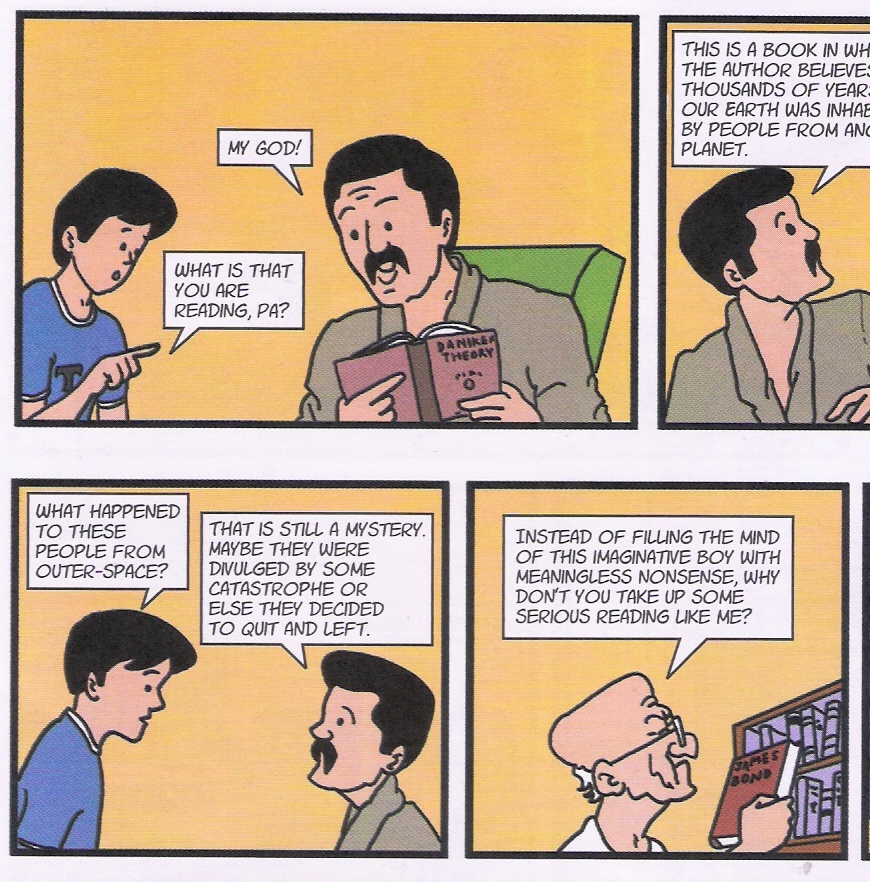I think there was a distinct period in my childhood when I believed that the Phantom and Mandrake the Magician were Indian comic book characters. Indrajal Comics had been publishing these (and other King Features characters) in India since the 1960s and on visits to the country I’d occasionally read old issues. But these visits were few and far apart, and by the time I moved to India in the 1990s Indrajal had folded. So I’d never read the Timpa stories that Indrajal serialised as backup features in the late 80s until recently, when Pop Culture Publishing brought out four full-length adventures.
It’s obvious from the style of the art (and from the fact that creator Jhangir Kerawala freely admits to it) that the Timpa stories are heavily inspired by Hergé’s Tintin comics. Timpa is a boy detective as well, though in somewhat more realistic circumstances; he’s an actual child for one thing, and is only taken seriously by anyone because his (alarmingly indulgent) father is a police inspector. Timpa’s Calcutta is one where market shopkeepers sleep half the afternoon, where policemen occasionally take bribes, and where middle-class Calcuttans will always argue with rickshaw or taxi drivers about fares—this is a world I recognise. Tintin flies all over the world (and occasionally into space); Timpa takes trains and buses and doesn’t get further than the Andaman islands. His dog, “Rexy”, is always portrayed as a dog. He may chase the occasional cat but we never know what’s going on inside his head, as we do with Snowy.
Like Tintin, Timpa himself is fundamentally dull. There’s not much to him, other than an earnest need to help, and he stumbles onto things through sheer coincidence more than by any exciting process of deduction. Like Tintin he has a cringingly grateful faithful companion—Kalia, who is of a distinctly lower class, is tellingly dark-skinned, and is apparently incapable of defending himself against children without Timpa’s help.
But the really important character here is the grandfather who joins Timpa on his adventures. Grandpa has Captain Haddock’s belligerence combined with some of Professor Calculus’ talent for misinterpreting a situation. He’s grumpy, convinced of his own misunderstood brilliance, and often imagines himself as a superhero, or at least super-muscled. He’s also convinced that he’s the brains of this operation, though in this he is sadly misguided.
Grandpa gets all the best lines because in addition to being the comic relief he’s also the background voice snarking at (and therefore somewhat deflating for the reader) Timpa’s heroic plans. At one point Timpa drags him into a grand attempt to break out of prison a friend who has been sentenced to death. Grandpa is seen muttering darkly in the background about the whole thing possibly inspiring real murderers like Charles Sobhraj.
As I write this I realise that in a sense Grandpa is this series’ Snowy as much as he is its Haddock. A wry commenter placed partly outside the text by a refusal to entirely play by its rules: Grandpa rarely accepts the obvious realities of the plot.
Pop Culture appear to have faithfully reproduced the original comics, flaws and all. Sarbajit Sen, the artist for the first two books (The Red-Hooded Gang and Operation Rescue) appears to me to be a far superior artist to Avijit Chatterjee who did Runners of The Golden Horn and Legacy of the Gods. We’re given no clues as to who was responsible for the mystifying decision to have all the text in Operation Rescue be in cursive. And Kerawala’s grasp of the English language isn’t always all it could be. (He has now written a Timpa novel, The Soothsayer of Sealdah. I do not recommend it.)
And yet. Kerawala’s Calcutta feels just right, Timpa’s father and Grandpa are fantastic (his mother, who is usually the sole female character, sort of hangs around in the background weeping about her son’s safety). I complain about the less than perfect use of English, but Kerawala clearly has enough command over the language to make wordplay something that his characters indulge in almost instinctively. Timpa may be a lukewarm Tintin ripoff, but his setting and the people around him feel a lot more real than the people in Tintin’s world. If not necessarily realistic.
Which brings me to the real reason to read these comics – the fourth one, Legacy of the Gods.
Rereading Hergé’s Flight 714 last year I realised that it had first been published in 1968, the same year as Erich Von Däniken’s Chariots of the Gods? Von Däniken’s theory in this book (popular with teenagers around the world, or at least it was in my day) is that in Earth’s far-distant past it was visited by various extra-terrestrials whose far superior technology made them appear as gods or angels to our primitive ancestors. Flight 714 has Tintin and his companions taken aboard a hijacked plane to an island that, the natives claim, was once visited by gods in “fire-lorries”. There are statues that look suspiciously astronaut-like, and a strange man who can communicate telepathically, but aliens wipe the characters’ memories of these events before anyone else can be told.
I’m not sure if it was coincidence or a deliberate continuation of the Tintin theme that prompted Kerawala to do a Chariots of the Gods?-themed Timpa story. Legacy of the Gods opens with a direct reference to the book when we see Timpa’s father reading Von Däniken.
Soon after, Timpa visits an uncle in Murshidabad, stumbles upon a secret underground chamber and finds ancient scrolls written in an unknown script.
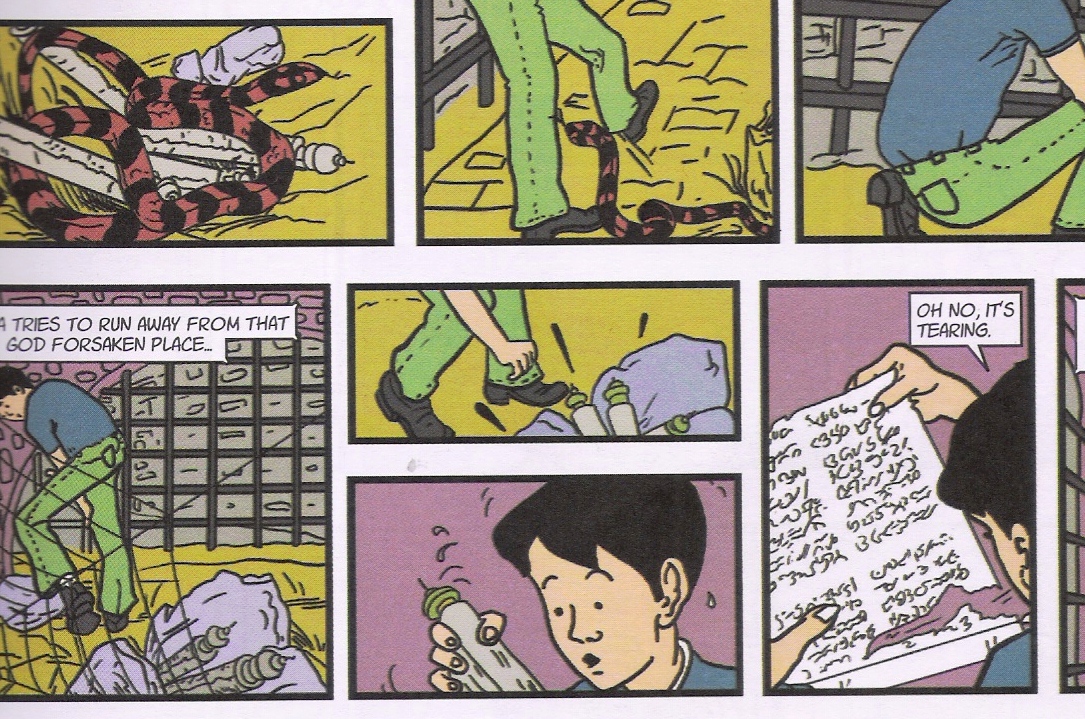
As Timpa suffers from a raging fever caused by snakebite he dreams of a strange man (we will learn that he is an alien) who warns him that the knowledge in these 14,000 year old scrolls is dangerous to humans. The alien’s name is … Vladimir. I cannot explain this. I also cannot explain why Vladimir has sparser chest hair and better skin on the cover of the book.
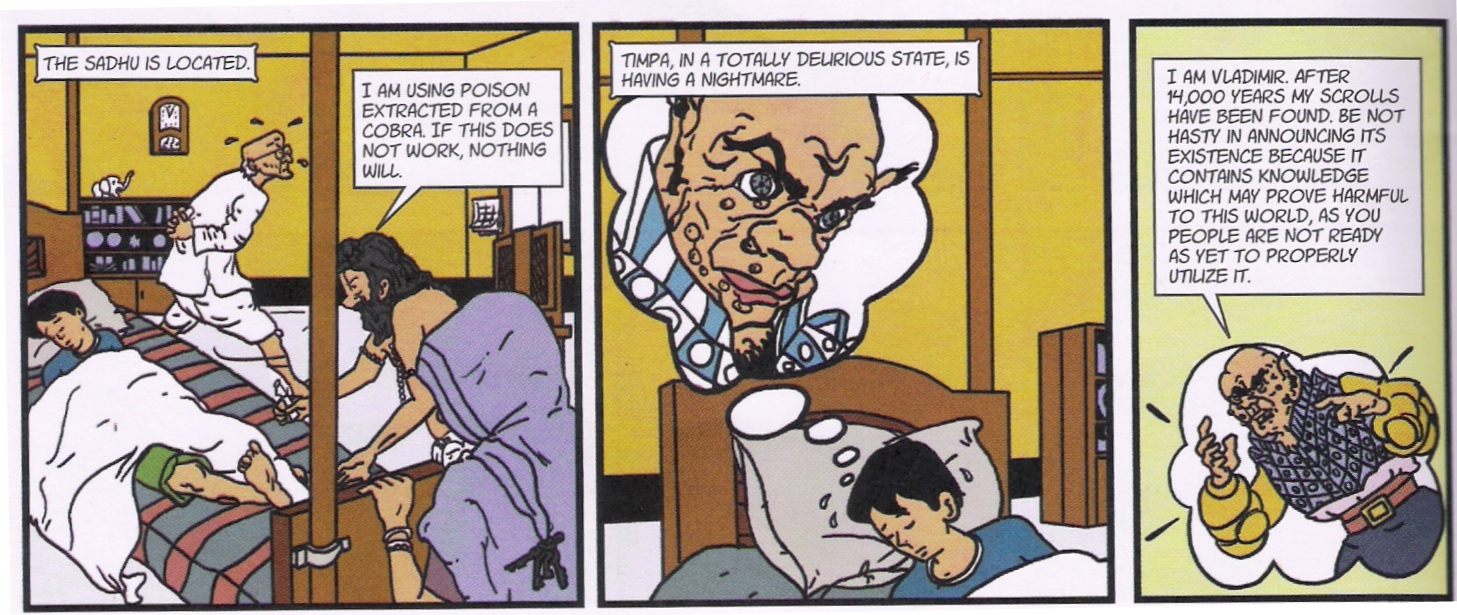
The scrolls, it turns out, are in an old form of Pali. Naturally the Indian government fails to listen to young Timpa’s insistence on the importance of these scrolls. Naturally the Americans and the Russians (this is set in the 1980s) are interested. A series of kidnappings and interchangeable villains follow.
Naturally the Americans almost get away with it. Until the Russians blow up their helicopter.
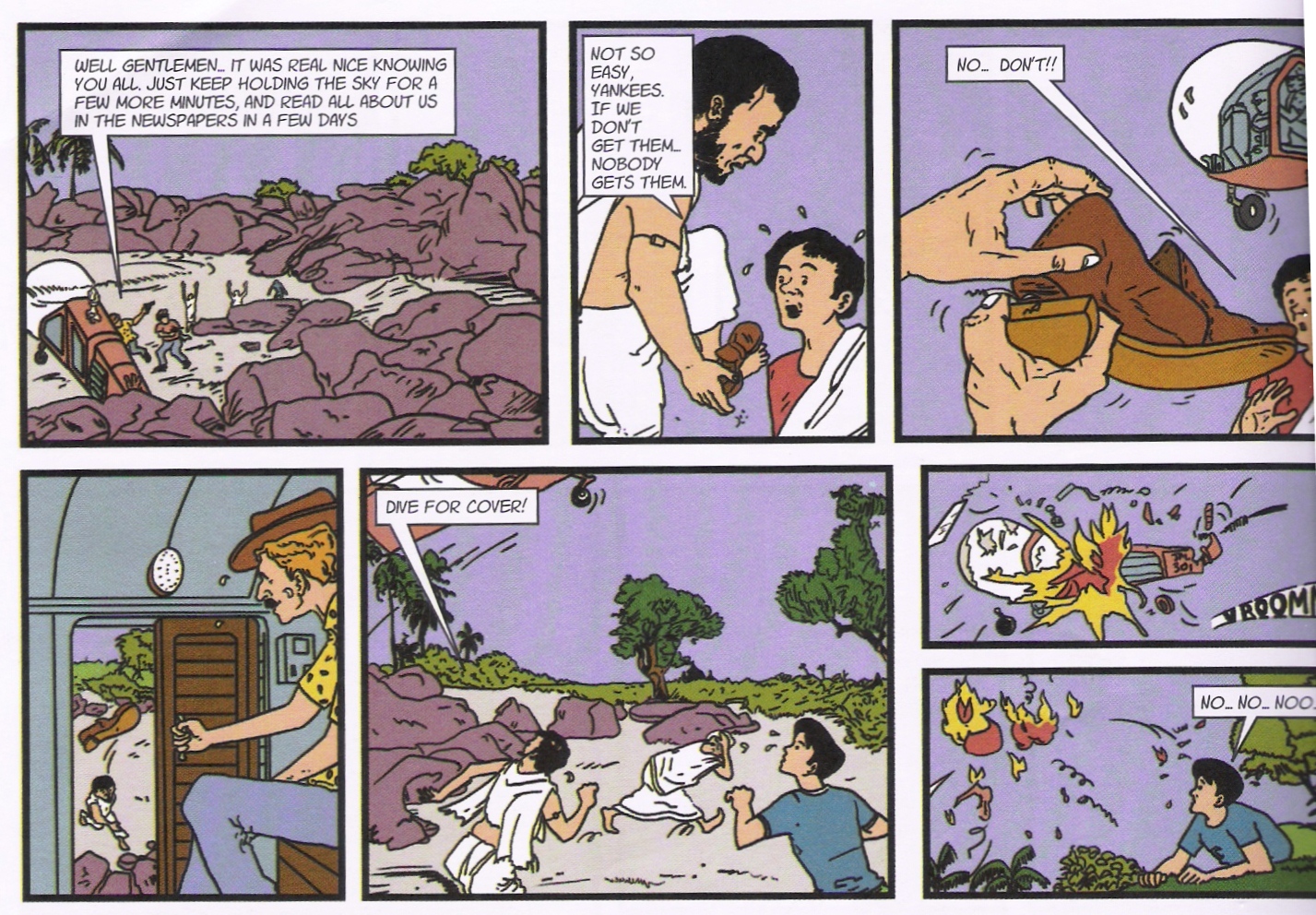
And so once more, great (or terrible?) knowledge is lost to the world.


